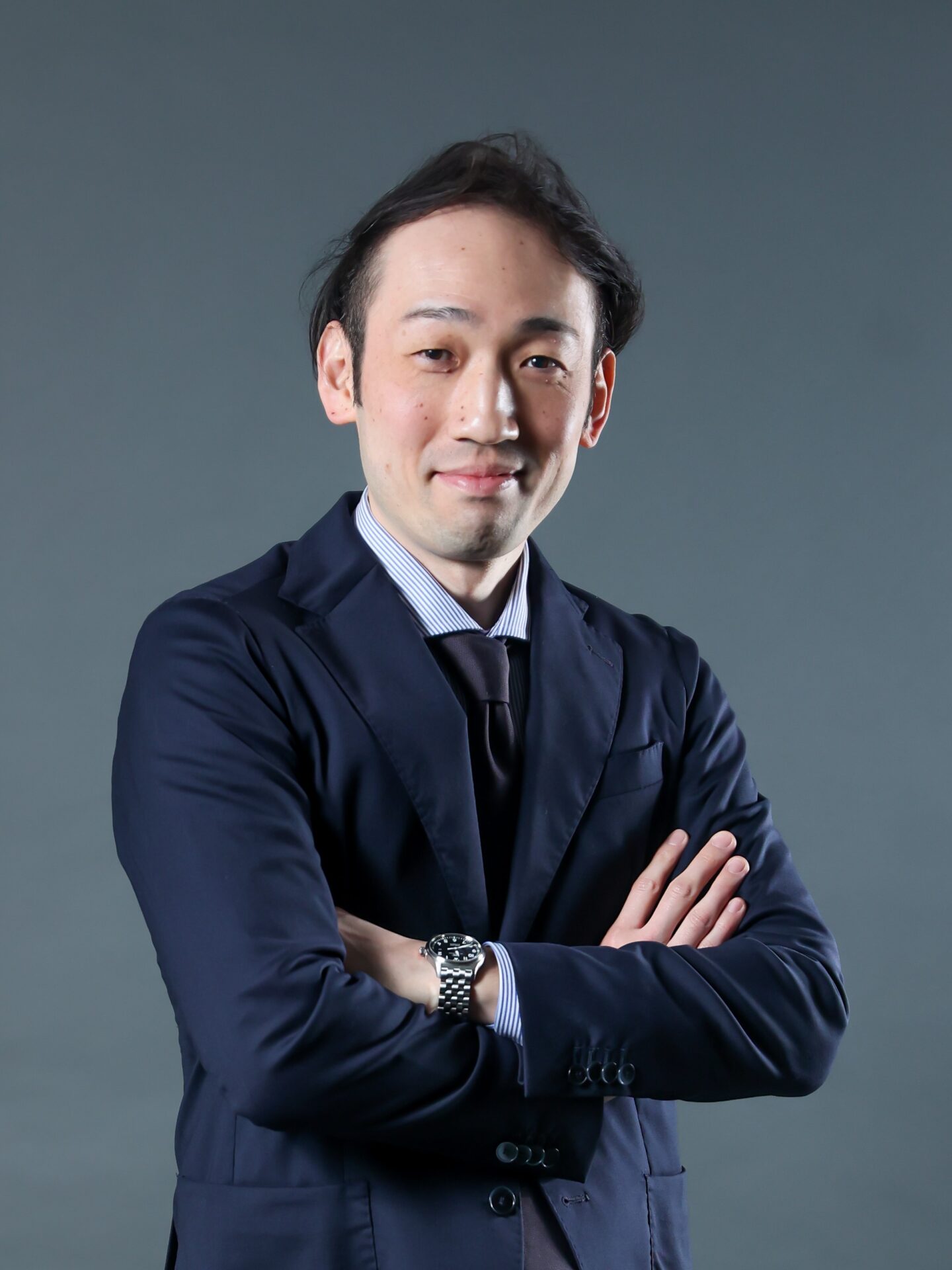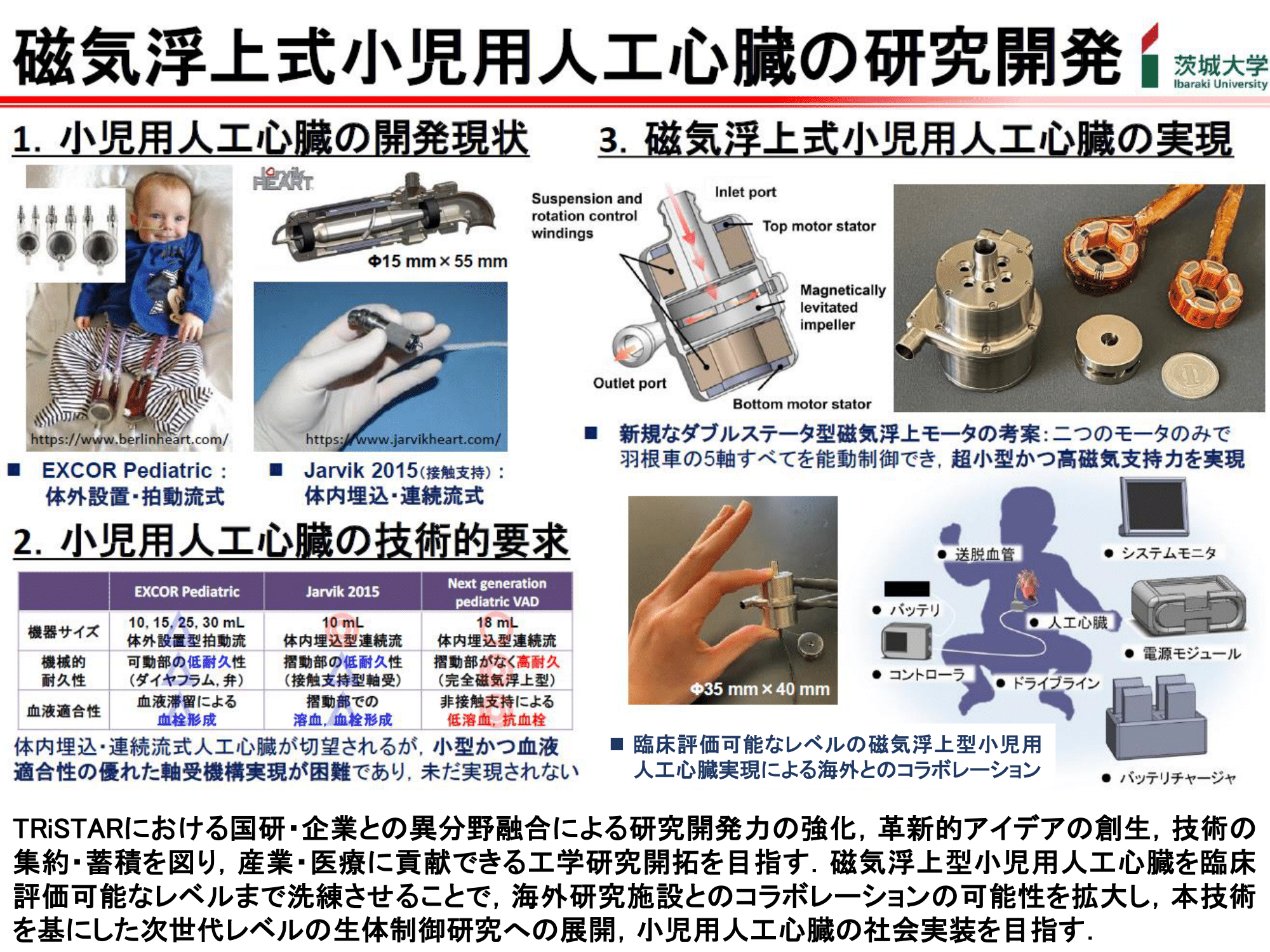Strategic Professional Development Program for Young Researchers
Top Runner Development Program Engaging Universities,
National Labs, and Companies
Fellows (2nd-term)

OSA, Masahiro
Associate Professor
Faculty of Applied Science and Engineering
Ibaraki University
- Research fields
- Mechanical dynamics, Control engineering, Mechatronics, Biomedical engineering
- Research project
- Design and control of magnetically levitated actuators, Magnetically levitated ventricular assist device
- Keywords
- Maglev motor, Magnetic bearing, Mechanical circulatory support
- Researchers Information
- https://researchers.ibaraki.ac.jp/search/detail.html?systemId=01e3009f47d8a49d&lang=en&st=researcher
- researchmap
- https://researchmap.jp/7000007335
Biography
Masahiro Osa is a Mechanical Engineer and is a lecturer of the Major in Mechanical Systems Engineering, Graduate School of Science and Engineering, Ibaraki University, Japan. He is a graduate of Graduate School of Science and Engineering, Ibaraki University, Japan, and received his Ph.D. degree in Engineering in 2014. He was working as a Research Fellowship for Young Scientists from 2012 to 2014. He has more than 10 years of experience in design, control and development of magnetically levitated actuators for use in mechanical circulatory support devices. Since 2014, he has studied miniaturization and performance enhancement of the proposed magnetically levitated motor with 5 degrees of freedom active control to develop the implantable pediatric VAD. Since 2018, through the project of the Japan Agency for Medical Research and Development, he has performed animal experiments to evaluate the prototype pediatric VAD for socially implement a pediatric circulatory support device.
Research Outline

Mechanical circulatory support (MCS) devices such as ventricular assist devices (VADs) are used as a bridge to heart transplantation or destination therapy for severe heart failure patients. Implantable VADs have been clinically available for adult patients according to advance of compact continuous flow VAD technologies, increasing the survival rate and improving quality of life. In recent years, there has been growing interest in MCS used in pediatric patients. However, pediatric VADs are limited to the EXCOR Pediatric, which is extracorporeal pulsatile flow VAD, due to difficulty of of continuous flow pediatric VADs development caused by technical issues such as device miniaturization and blood compatibility (no hemolysis and no thrombosis). In this research, an ultra-compact axial flux permanent magnet synchronous maglev motor which has been developed for a next generation continuous flow implantable pediatric VAD. The motor has two identical motor stators, and a levitated impeller is sandwiched between the stators. Originality of the maglev motor undergoing development is five degrees of freedom active control of impeller postures with only two motor stators enhancing suspension stability in small device size. The motor has been successfully miniaturized to 22 mm in diameter and 33 mm in height. A maglev pediatric VAD prototype has been developed combining the compact maglev motor and a centrifugal blood pump. The developed prototype has sufficient hydraulic characteristics for pediatric circulatory support and non-contact impeller suspension performance. Currently, chronic animal trial has been started in extracorporeal circulation, and the prototype VAD demonstrates sufficient magnetic suspension stability and better blood compatibility, indicating a significant potential for achieving the practical use of a next generation pediatric VAD. As a next step, long term animal experiment with device implantation as well as development of a total system of the pediatric VAD will be conducted.
What is my goal as a transborder researcher?
次世代人工心臓研究において企業・医療機関と協同した実用化研究を通して蓄積されたモノづくり技術,研究成果・獲得知見は,異分野共存による新たな研究創生や専門深化への相乗効果を得る大きなチャンスを生み出すものである.TRiSTARへの参画により,専門分野を活かした産学・医工連携研究を積極的に活性化することで,更なる研究実践力の強化と合わせて,研究組織体制構築やモノづくりのスピード感を新たに吸収し,産業・医療に貢献できる工学研究開拓と確実な社会実装を目指したい.
The manufacturing technologies, research procedures, and knowledge obtained through research and development of the next generation pediatric VAD in collaboration with companies and medical institutions offer great opportunities for synergistic effects in the creation of new research and the deepening of expertise through the coexistence of different fields. I hope to actively activate industry-academia/medical-industry collaboration research that makes the most of our fields of expertise by participating in TRiSTAR project. As well as, I would like to build a new research organization and absorb a new sense of speed in manufacturing, aiming to establish engineering research implemented in society that can contribute to industry and medical fields.
Movies
-
OSA, Masahiro, TRiSTAR Fellow (2nd-term)
Related article
- 2024/03/19
- The 6th TRiSTAR Co-Creation Relay Seminar
